I'm trying to fit some count data for the number of fish purchased by anglers(grey in the image) with a distribution using optim in R. I've fit both a poisson (red) and negative binomial distribution (blue) but as you can see neither seems to be right. What should my next steps be for getting a better fit?
My graph:

#fit poisson curve to data using optim
minus.logL.s<-function(lambda, dat){
-sum(dpois(dat,lambda, log=TRUE))}
mle<-optim(par=45,fn=minus.logL.s, method="BFGS",hessian=T,dat=survey.responses.baitusers$fish.per.trip)
mle
#simulate data coming from a poisson distribution of mean 38
simspois<-as.data.frame(rpois(1000, 38))
colnames(simspois)<-("simulated_values")
#fit negative binomial curve
minus.logL.nb<-function(pars, dat){
mu<-pars[1]
size<-pars[2]
-sum(dnbinom(dat, mu=mu, size=size,log=TRUE))}
mlenb<-optim(par=c(mu=38,size=1),fn=minus.logL.nb, method="BFGS",hessian=T,dat=survey.responses.baitusers$fish.per.trip)
mlenb
simsnegbin<-as.data.frame(rnbinom(1000,size=4, mu=38))
colnames(simsnegbin)<-("simulated_valuesnb")
#graph both
graph<-ggplot(survey.responses.baitusers)+aes(fish.per.trip)+geom_histogram()+geom_smooth(data=simspois, aes(simulated_values), stat = "count",color="red")+geom_smooth(data=simsnegbin, aes(simulated_valuesnb), stat="count", color="blue")
graph
Output from negative binomial fitting:
$par
mu size
38.333338 4.107287
Output from poisson fitting:
$par
[1] 38.33333
My data:
> survey.responses.baitusers$fish.per.trip
[1] 15 34 42 38 8 38 21 29 58 29 40 35 33 51 50 40 8 45 44 45 34 57 8 28 63 54 22 44 65 54 54 15 12
[34] 42 59 40 43 95 80 15 54 19 44 27 53 95 21 38 40 13 25 27 79 38 85 40 33 74 34 77 34 34 33 35 89 34
[67] 34 37 16 60 17 21 18 37 34 27 30 62 48 35 55 50 23 32 56 34 11 21 34 48 15 34 26 54 8 95 8 58 54
[100] 44 34 47 35 13 21 53 52 52 40 40 33 8 15 15 25 41 63 34 38 87 14 68 58 59 34 55 24 24 35 33 21 8
[133] 8 15 51 48 8 21 39 29 50 54 62 16 54 33 58 22 49 40 30 51 21 19 51 40 34 27 40 45 80 69 8 42 33
[166] 62 40 82 17 14 30 61 45 70 33 33 16 49 32 34 31 31 18 64 33 39 21 56 40 52 71 34 30 27 54 8 64 16
[199] 54 127 13 51 40 33 63 31 30 63 56 57 77 46 64 22 34 50 66 33 34 59 45 16 21 60 58 15 64 29 40 44 29
[232] 8 21 16 72 34 49 57 34 34 15 33 54 40 32 33 95 107 49 64 59 64 37 70 45 16 16 40 19 53 34 39 21 36
[265] 34 17 8 34 51 13 20 34 21 38 36 36 41 34 83 27 8 45 29 34 21 37 44 15 50 25 27 8 27 19 24 40 8
[298] 28 36 24 40 21 70 20 34 21 46 16 20 8 33 34 54 44 77 80 15 34 40 29 48 59 29 8 15 47 45 21 41 23
[331] 34 51 14 40 25 45 64 59 107 21 59 27 56 48 34 45 59 35 30 37 32 8 51 11 48 64 32 8 52 14 20 18 8
[364] 53 52 53 33 34 48 62 34 34 8 46 39 21 33 34 40 49 52 19 24 29 43 19 29 27 46 52 29 51 61 16 17 35
[397] 34 40 25 28 34 42 66 35 49 35 51 66 21 51 45 14 53 22 42 64 8 48 28 66 52 40 29 34 34 41 59 34 52
[430] 16 32 20 35 8 8 21 49 40 33 16 24 8 42 23 63 26 21 33 8 23 112 57 8 46 18 67 34 30 33 40 43 57
[463] 60 33 14 27 44 21 31 30 27 49 57 69 66 22 28 55 11 43